The raising and breeding of domestic sheep are known as sheep farming or sheep husbandry. It’s an animal husbandry sub-discipline. Sheep are primarily produced for their meat (lamb and mutton), milk (sheep’s milk), and fiber (sheep wool). Sheepskin and parchment are also produced. Sheep can be raised in various temperate conditions, including desert zones near the equator and other hot and humid regions.
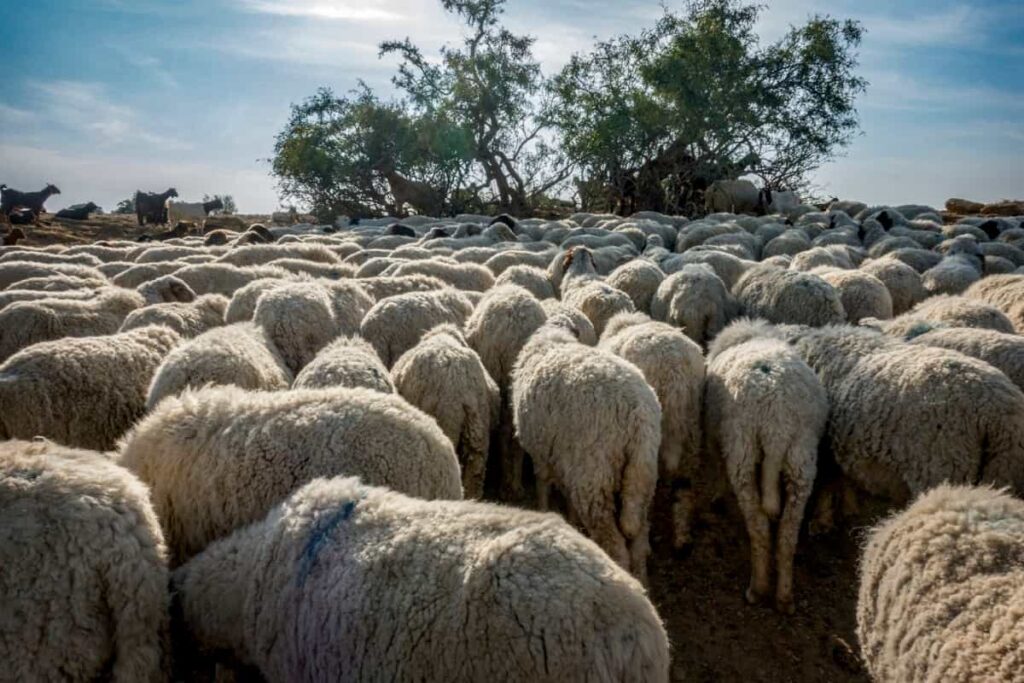
Farmers construct fences, homes, shearing sheds, and other infrastructure for water, feed, transportation, and pest management on their land. Sheep are allowed to graze pastures on most farms, sometimes under the supervision of a shepherd or sheepdog. In this blog post, we look at 500 sheep farming project report in India.
Commercial Sheep Farming Advantages
- On the other hand, sheep do not necessitate the construction of expensive structures and require less labour than other animals.
- The foundation stock is inexpensive, and the flock may rapidly increase.
- Sheep are efficient grass-to-meat and wool converters.
- Sheep, unlike other animals, will eat a wide variety of vegetation. As a result, they are superb weed eaters.
- Sheep, unlike goats, do not cause tree damage.
- The shepherd earns money from three separate sources: wool production, meat production, and manure production.
- Their lips’ structure aids in the cleaning of grains lost after harvest, allowing them to turn waste feed into profitable products.
- Mutton is one type of meat that no Indian community has a bias against, and the creation of superior breeds for mutton production would significantly impact India’s rising economy.
Sheep Farming’s Potential and National Importance
The 2012 livestock census shows the country has 65.069 million sheep, ranking sixth globally. Sheep contribute 8% of the overall export value of agricultural and processed food goods in the form of meat exports. Sheepskin is also exported in the form of leather and leather items. Sheep contribute significantly to the economic well-being of the poorest members of society. Shepherds are the most impoverished of all livestock owners.
In case you missed it: How to Start Sustainable Sheep Farming: Benefits and How to Reduce Your Carbon Footprint with Sheep
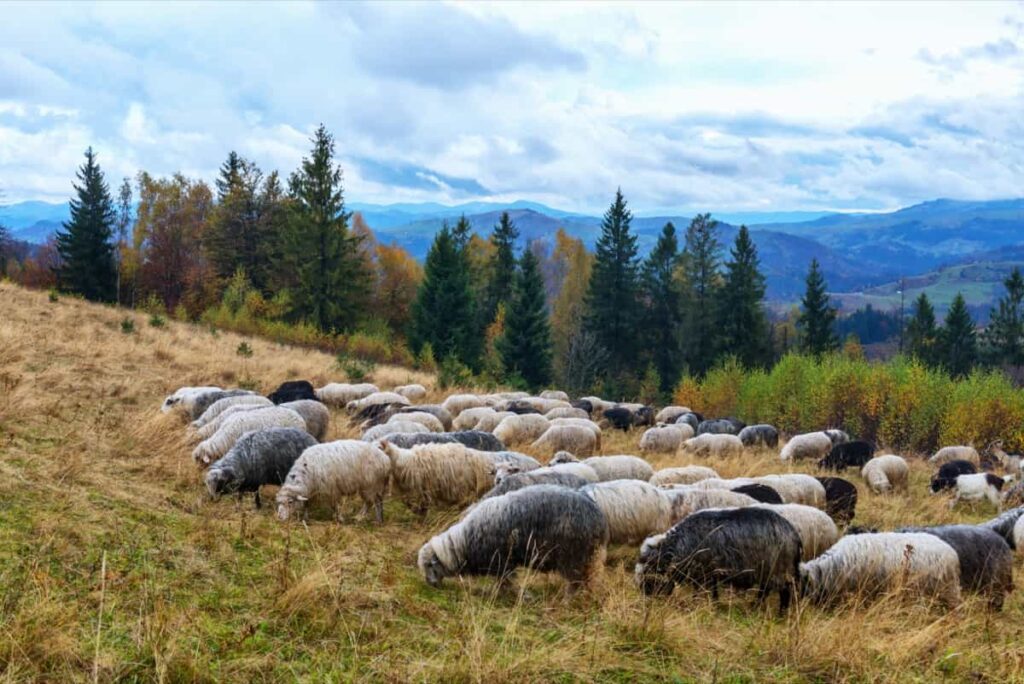
Some Sheep-related Diseases
Sheep are susceptible to a variety of illnesses. This paragraph provides an overview of some of the most frequent sheep diseases. Scrapie is included, despite its rarity, because it is significant for public health and perception. Experts in the sheep industry are particularly concerned about the potential of five illnesses that are currently posing a threat to the industry:
- Bluetongue(BT)
- Sheep pox
- Tetanus
- Sheep Anthrax
- Orf
Sheep Farming Financial Aid
Starting a sheep farm requires a loan from a bank with a NABARD refinance facility. Farmers should apply for a bank loan at the nearest commercial, cooperative, or Regional Rural Bank branch in their area using the specified application form, which is accessible at the financing bank’s branches.
The bank’s technical officer or manager might assist the farmers in preparing the project report needed to acquire a bank loan. Detailed information will be required for sheep development initiatives with significant outlays. Borrowers can use the services of NABARD Consultancy Services (NABCONS) for high-value projects, as they have extensive experience preparing Detailed Project Reports. A good sheep farming plan should include the following financial aspects:
- Sheep Unit Cost — the average cost per unit of Sheep.
- Feed and fodder costs, veterinary assistance, and insurance are all factors to consider.
- Output costs, such as animal sale prices,
- Statement of income and expenditures, as well as the annual gross surplus.
- Analyze your cash flow.
- Repayment schedule, which includes both principal and interest repayment.
Approval of a Bank Loan and its Payment
- Submit the application form and the business plan to NABARD for approval.
- A technical officer will visit the farm and ask questions before the loan and subsidy are approved.
- The loan amount has been approved, and monies have been deposited into the borrower’s account.
- It is vital to remember that the loan only covers 85% of the project’s costs (at most). The borrower is liable for 15% of the total cost.
In case you missed it: Contract Sheep Farming in India: Companies, Agreement, Profits, How it Works and the Pros and Cons
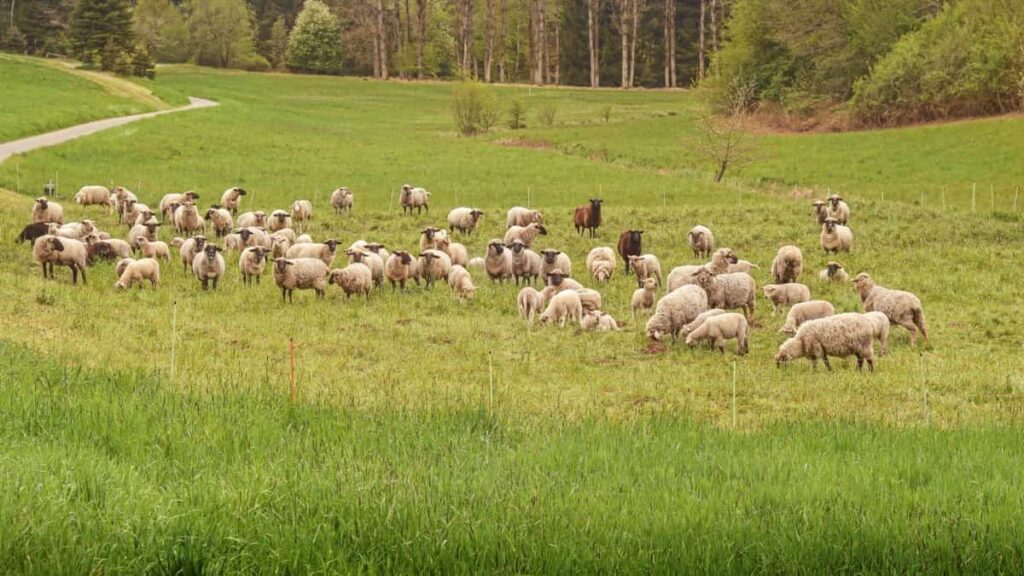
Sheep Breeds for Wool And Meat in India
With such a significant population and a growing appetite for meat, commercial sheep farming became a viable alternative across India. Depending on where you go in India, you’ll find a variety of sheep breeds. However, this article will explore common sheep breeds, their qualities, and their performance.
Gaddi Sheep
These are little sheep that may be found across Jammu. The primary reason for raising this breed is for the wool. Males have horns, whereas females do not. This breed’s wool is beautiful and lustrous, with an average annual production of 1.15 kg per Sheep. Sheep are clipped three times a year. Kullu shawls and blankets are made from the wool of this sheep breed.
Mandya Sheep
Mandya Sheep are primarily found in the Karnataka district of Mandya. This breed has a tiny physique with long, leafy, and floppy ears. Male sheep weigh around 35 kg on average, whereas female Sheep weigh about 25 kg. This sheep breed is noted for generating the tastiest meat among other Indian kinds.
Nellore Sheep
These are primarily found in Andhra Pradesh and parts of Telangana. Because of its ability to adapt to the southern climate can be raised in any part of India. This breed is the tallest in India and has a goat-like appearance. These are a little hairier and taller. Long, drooping ears characterize this sheep breed. This breed’s sheep are primarily red, known as Nellore Red sheep.
Coimbatore Sheep
This breed is mainly found in Tamil Nadu’s Coimbatore area. This sheep breed is primarily used for wool production and grows to medium weight. These come in a white tint with black or purple colour bands around the head and neck. Adult female Sheep with no horns make up 30-35% of the population. Male and female Sheep weigh approximately 25 and 20 kg, respectively.
The Chennai Red Sheep
This breed is primarily found in Tamil Nadu. This breed is majorly used in the production of meat. Most Chennai Red Sheep are purple, with colorful stripes on their foreheads. Male and female sheep have average body weights of 34-36 kg and 24-26 kg, respectively.
Deccan Sheep
This breed is a hybrid between the woolly sheep of Rajasthan and the hairy sheep of Andhra Pradesh, Telangana, and Tamil Nadu. These sheep are reared for both wool and meat production. This breed can be found in the Mumbai Deccan region and parts of Andhra Pradesh, Karnataka, and Telangana.
The hue of this sheep breed is grey and black. Because this sheep breed is small and tough, it is well-suited to difficult grazing conditions. An annual wool yield of roughly 5kg per Sheep is projected because these sheep are suitable for wool production. The wool is of poor quality, consisting predominantly of a mixture of hair and fiber, and is used primarily to manufacture rough blankets.
Marwari Sheep
Long legs, a black face, and a large snout characterize the Marwari sheep breed. The tail is pointed and short. This breed is found primarily in the Rajasthan regions of Jodhpur and parts of Jaipur. These Sheep breed flocks are raised in Rajasthan’s Barmer and Bali districts. These sheep move to areas in Uttar Pradesh, several Madhya Pradesh regions, and parts of Maharashtra. This breed has a high worm and illness tolerance. The survival rate of this breed is relatively high due to its excellent resistance. Each Sheep’s annual wool production is estimated to be between 1 and 1.25 kilograms.
In case you missed it: Common Sheep Diseases, Symptoms, and Treatment: Check How this Guide Helps Sheep Farmers
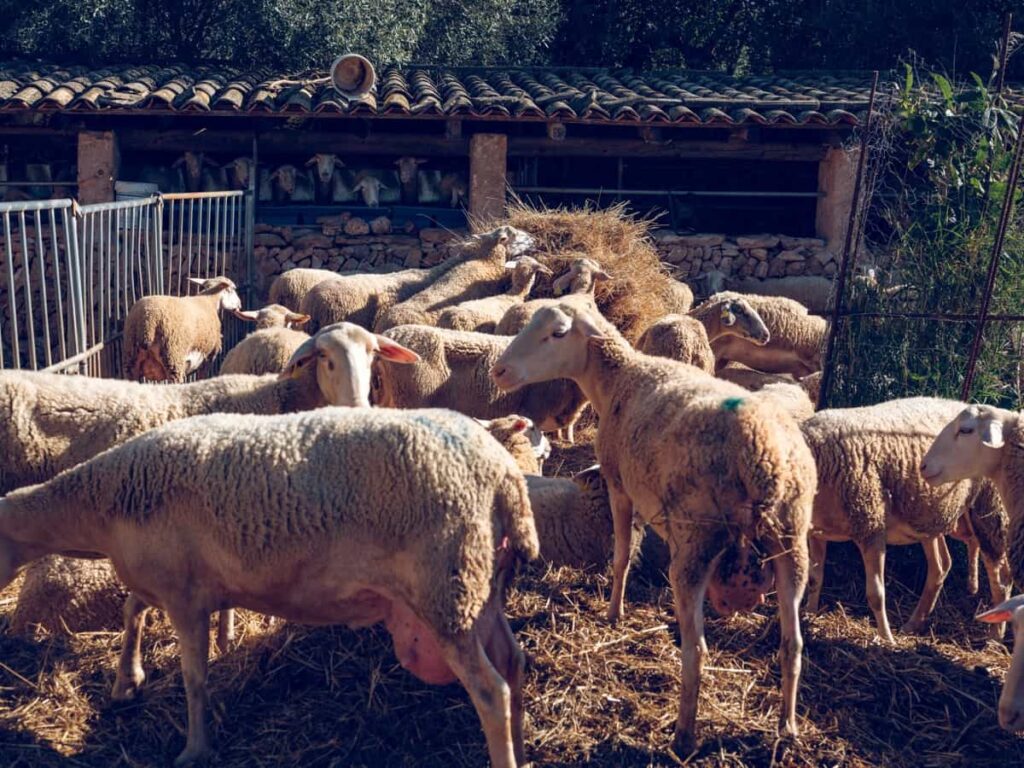
Vembur Sheep
This breed is mainly found in Tamil Nadu’s rural areas. These are tall animals that are primarily raised for meat. The skin of this sheep breed is white, with red markings on the body. Ears are typically drooping and smaller in size. The adult males of this breed have horns, but the females lack them. Farm management strategies determine adult male and female sheep body weights. Male and female sheep weigh 35-38 kg and 28-30 kg, respectively.
Feeding
Sheep must be adequately fed for proper growth and maximum productivity. They stay fit, productive, and disease-free by eating high-quality food. As a result, make every effort to provide your Sheep with high-quality, nutritional foods. Their favourite foods are usually grasses, shrubs, and corn of various kinds. Aside from the above points, always provide your Sheep with enough clean and fresh water to meet their needs.
Sheep Feeding Range
The type and amount of supplement to feed is determined by the sheep’s bodily condition, the amount and type of forage on the range, and the meteorological circumstances. Joint supplements include:
- High-protein or cottonseed meal and salt
- Medium-protein pellets
- Low-protein or corn
- Minerals
- Alfalfa hay
The lamb crop can be boosted by 10%–15% and wool production by 1 pound (400–500 g) per ewe when the diets of sheep on the western winter range are supplemented adequately. Range of Feeding Sheep grazing begins in the spring. Feeding 115 grams of high-protein (36%) supplement or 150–225 grams of medium-protein (24%) pellets three weeks before and during the breeding season, during freezing weather, and for one month before greening is one advised technique. Small lambs, small yearling ewes, old ewes with bad teeth, and lean ewes should also be segregated from the rest of the flock.
Formulation of a Scheme
After consulting local technical personnel from the State Animal Husbandry Department, DRDA, Sheep Development Corporation, Sheep Cooperative society/union/federation, and commercial farmers, a beneficiary can design a strategy. Beneficiaries should visit progressive sheep farmers and government/agricultural university sheep farms in the area to discuss the profitability of sheep farming.
Practical experience and training in sheep farming will be significantly valued. Due to efforts by the State Government’s Animal Husbandry/Sheep Development Department / Sheep Development Board, the sheep cooperative societies founded in the villages will provide all necessary support, including live animal and wool selling.
In case you missed it: How to Care for Dairy Goats: Shelter/Housing, Fencing, Feeding, and Disease Control
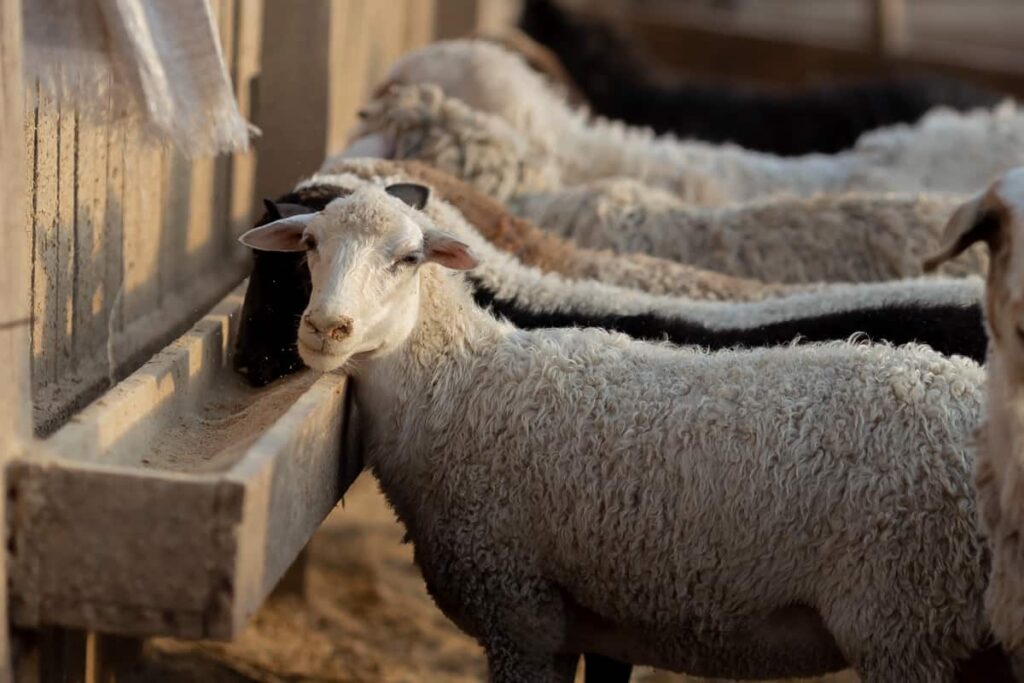
Sheep Sarming Tips
- To make more money, you must follow modern and scientific sheep-rearing guidelines.
- Learn everything there is to know about sheep farming.
- It is necessary to select a healthy sheep breed. Take special precautions when feeding sheep.
- To increase earnings, good marketing is required. Determine your marketing strategy first.
- Read as many books, magazines, and websites as you can about sheep farming. You can also go to some farms in your region, gain experience from them, and then do it yourself.
500 Sheep Farming Project Report for Marwari Sheep
Particulars
| Description | Remarks |
| Maize silage cost ( house production) | Rs. 500 per ton |
| Cost of Lucerne grass in house production | Rs. 100 per ton |
| Cost of mineral feed supplements | 0.75 paisa per day |
| Cost of shed construction | Rs. 100 per sq. ft. |
| Chain link and mesh fencing cost | Rs. 25 per sq. ft |
| Cost of Feeders with drinkers | Rs.5,000 per unit |
Remarks
| Description | Remarks |
| Maize crop | In-house production is mandatory |
| Lucerne | In-house production is mandatory |
| Sheds construction | Entrepreneurs should minimize the cost of sheds |
| Irrigation facilities | Normal/Drip irrigation for maize cultivation |
| Irrigation facilities | Normal/Sprinkler irrigation for Lucerne cultivation |
Capital Cost Required (One-time)
| Description | Amount (Rs) |
| Cost of 8000 sq. ft shed | 8,00,000 |
| Cost of chain link mesh fencing | 1,72,500 |
| Cost of feeders, drinkers, etc., | 1,50,000 |
| Chaff cutter | 1,00,000 |
| Storerooms | 50,000 |
| Total | 12,72,500 |
Running Cost (Yearly)
| Description | Amount (Rs) |
| Cost of 500 rams | 20,00,000 |
| Cost of maize silage | 1,80,000 |
| Cost of Lucerne | 36,000 |
| Cost of labor | 3,20,000 |
| Cost of mineral mix | 1,35,000 |
| Cost of veterinary care | 50,000 |
| Miscellaneous expenditure | 14,000 |
| Total Expenditure | 27,75,000 |
Total capital cost is 12, 72,500 + 27, 75,000 = 40,47,500
Loan Structure
| Amount (Rs) | Amount (Rs) | Amount (Rs) |
| Term loan | 75% | 30,35,625 |
| Own contribution | 25% | 10,11,875 |
In case you missed it: Sustainable Goat Farming: Business Plan, Benefits, and Requirements
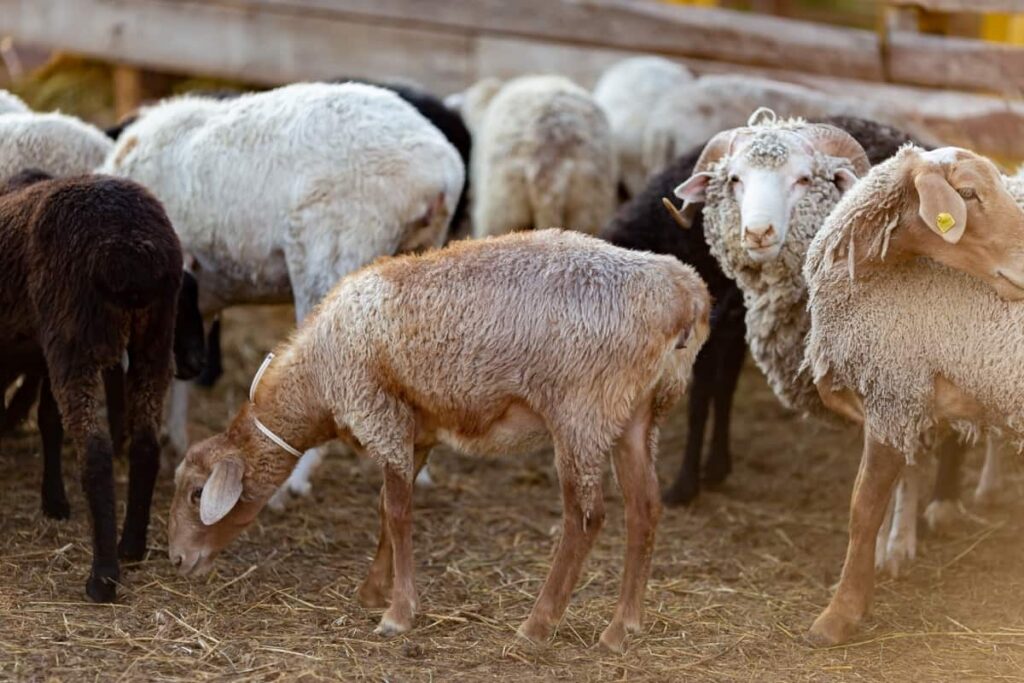
Income Table
| Description | Amount |
| Selling price of adult rams (500rs / kg) | 50,00,000 |
| Sale of manure of 300 tons (Rs.1000/ton) | 3,00,000 |
| Total Gross Income | 53,00,000 |
Profit Margin
| Description | Amount |
| Total gross income | 53,00,000 |
| Total expenditure (including one-time capital cost) | 40,47,500 |
| Net profit 1st year (one-time capital cost inclusive) | 12,52,500 |
| Net profit 2nd year (one-time capital cost excluded) | 25,25,000 |
After the first year, we may not see a large profit margin because the one-time capital cost is included, while after the second year when the one-time capital cost is removed, we can see high-profit margins. Although there is a maintenance cost associated with sheep farming after each cycle, such as cleaning and repair/alteration of any equipment, this cost pales compared to the total one-time capital cost.
Overall, this research report demonstrates that sheep farming in India is a lucrative enterprise. We used 500 sheep in this essay, which is a significant amount, but the profit margin shows how good the outcome may be. If you believe it is too difficult to handle, you can hire more laborers or partner with the firm.
Loan Repayment Schedule
| Year | Loan outstand at beginning of the year | Interest | Net income | Principal paid | Total repayment | Surplus |
| 1 | 30,35,625 | 3,64,275 | 12,52,500 | 7,58,906.25 | 11,23,181 | 1,29,318.75 |
| 2 | 22,76,718.75 | 2,73,206.25 | 25,25,000 | 7,58,906.25 | 10,32,112.5 | 14,92,887.5 |
| 3 | 15,17,812.5 | 1,82,137.5 | 25,25,000 | 7,58,906.25 | 9,41,043.75 | 15,83,956.25 |
| 4 | 7,58,906.25 | 91,068.75 | 25,25,000 | 7,58,906.25 | 8,49,975 | 16,75,025 |
| 5 | 0 | 0 | 0 | 0 | 0 | 25,25,000 |
Disclaimer: The opinions presented in this project are merely suggestions. This website does not accept any financial responsibility for anyone who uses this project report for any reason.
- Sheep Farming Business Plan for Beginners
- Aquaponic Farming at Home: A Step-By-Step Guide
- Profitable Village Farming Business Ideas in 2024
- High-Yield Aquaculture: Fast-Growing Fish for Farming
- Effective Fish Pond Construction Techniques for Beginners
- Irrigation and Water Management in Pineapple Farming
- Blossom to Harvest: Mastering Flowering and Pollination in Papaya Farming
- Pig Fattening Essentials: From Selection to Sale for Beginners
- Raising Wagyu Cattle: A Complete Guide for Premium Beef Production
- Soil Types and Their Water Holding Capacity
- Optimizing Irrigation Schedules for Coconut Groves for Enhanced Yield
- Espresso Your Garden: Coffee Grounds for Healthier Acid-Loving Plants
- The Best Soil Mix for Snake Plants: How to Mix Your Own Snake Plant Soil
- Green Thumb Success: Expert Tips for Cultivating Greenhouse Beans All Year Round
- Bloom All Year Round: The Ultimate Guide to Indoor Hyacinth Care
- Eco-Friendly Gardening: How to Make Liquid Fertilizer from Kitchen Waste
- Ultimate Guide to Grow Anise in Pots: Explore Seed Propagation to Harvesting
- Guide to Raising Chester White Pigs: Discover Breed Facts to Growth Management
- Mastering the Elegance: The Ultimate Guide to Weeping Cherry Tree Care, Planting, and Maintenance
- Ultimate Guide to Planting Garlic in Grow Bags: Growing Strategies for Beginners
- How to Fix Spider Plant Leaf-Related Problems: Natural and Organic Remedies
- 10 Reasons Why Your Tulsi Plant is Shedding Leaves: Home Remedies and Solutions
- Optimizing Growth and Yield: The Advantages of Palm Bunch Ash Fertilizer
- Utilizing Neem Oil Extract as a Natural Pesticide for Hydrangea
- From Soil to Harvest: Various Ways in Which Farmers Can Use AI Tools
- Steps to Encourage and Induce Citrus Flowers: A Comprehensive Guide
- How to Fix Snake Plant Leaf-Related Issues: Natural and Organic Remedies
- Transform Your Garden into a Fragrant Oasis with Raat Ki Rani (Night Blooming Jasmine)
- Discover the Ideal Chicken Breeds for Philippine Farms
- How to Create a Poultry Egg Farm Business Plan for Profits
- Grow Lemon Cucumbers Like a Pro: Insider Techniques for Bountiful Yields
- Ultimate Guide to Caring for Your Pink Princess Philodendron: Tips for Thriving Variegation
- Areca Nut Profit Per Acre: Calculating Yield and Cost of Cultivation
- How Kaveri Chicken is Becoming a More Profitable Breed in Indian Backyards
- Transform Your Barn: 9 Steps to Convert a Horse Stall into a Chicken Coop
- Exploring Suffolk Sheep Disadvantages with Limitations and Challenges
